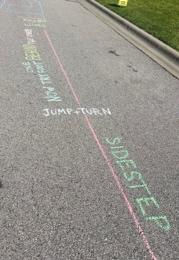What is ALS?
- Jasmine Curtis, OTS
- Jun 6, 2018
- 2 min read

Amyotrophic lateral sclerosis, or ALS, is a progressive neurodegenerative disorder affecting motor neurons in the cortex, brainstem, and spinal cord that causes weakness and atrophy of skeletal muscles (ALS Therapy Development Institute, 2018). Once the effects have taken place they are irreversible. As the disease advances an individual's muscle force and amplitude of active movement are diminished, taking away from their ability to ambulate and perform their activities of daily living. The disorder can be classified as sporadic or familial (inherited), with 90-95% of cases in the US being sporadic (ALS Therapy Development Institute, 2018). It is estimated that 20,000 Americans have the disease at any given time, with military veterans being twice as likely to be diagnosed with the disease as the public. Early signs and symptoms of the condition include muscle twitching or cramps, weakness in the hands, legs, ankles or feet, and difficulty swallowing or speaking. (ALS Therapy Development Institute, 2018).
ALS is typically not diagnosed by one diagnostic tool. It is typically diagnosed by the physician following a review of the history of the symptoms and signs during examination along with a set of different tests. Tests include electromyography and nerve conduction studies (ALS Therapy Development Institute, 2018). Both tests allow clinicians to see whether motor nerves are plugged into muscles and are working well.
Improving quality of life is a common theme for all healthcare professionals treating persons with ALS. Physical and occupational therapy can improve quality of life of persons with ALS in multiple ways: assistive devices, transfer aides, splinting and bracing, neck support, wheelchairs, home modifications, in the community, and patient and caregiver education (Lewis & Rushanan, 2007). Occupational therapists can address psychological issues by helping persons with ALS maintain independence through engagement in meaningful activities.
Loss of tolerance and fatigue is a common symptom of ALS (Lewis & Rushanan, 2007). Physical and occupational therapists working with persons with ALS can provide energy conservation in fighting fatigue and increasing function by providing simple adaptations to doing everyday tasks. Spasticity is an important complication of ALS, which PT and OT can lessen the effects through stretching and ROM exercises, as well as positioning and the use of orthotics and splints. Although pain is not a common problem in persons with ALS, it is sometimes present. Physical and occupational therapy can decrease or prevent pain through stretching and ROM exercises, as well as the use of modalities (Lewis & Rushanan, 2007). Caregiver education on transfer techniques, daily stretching, and positioning and proper support is also key and can be provided by PT and OT.
If you have questions, concerns, or would like additional information on this diagnosis, feel free to contact a therapist here at All Care Therapies!
References
ALS Therapy Development Institute. (2018). What is ALS? Retrieved from https://www.als.net/what-is-als/
Lewis, M., & Rushanan, S. (2007). The role of physical therapy and occupational therapy in the treatment of Amyotrophic Lateral Sclerosis. NeuroRehabiliation, 22, 451-461.




Comments